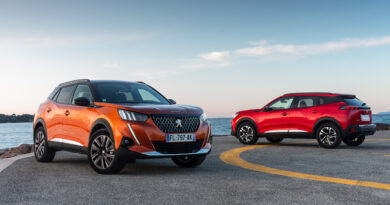Virtual mirrors: Audi e-tron’s digital first
Cameras and screens replace rear view glass in Audi’s e-tron EV
Marginal gains. They talk about this a lot in motor racing circles, especially when it comes to the slippery world of aerodynamics. Make a car more efficient through the air and it goes faster. Simple.
For electric cars improved aero means improved range, and improved range equals less range anxiety. Ergo, more buyers coming round to the idea an EV could suit their lives.
The bane of many a car designer are those God-awful side mirrors. Yes, it means you can see what’s going on behind you (useful, it seems), but they compromise a sleek design and don’t half cause some turbulence.
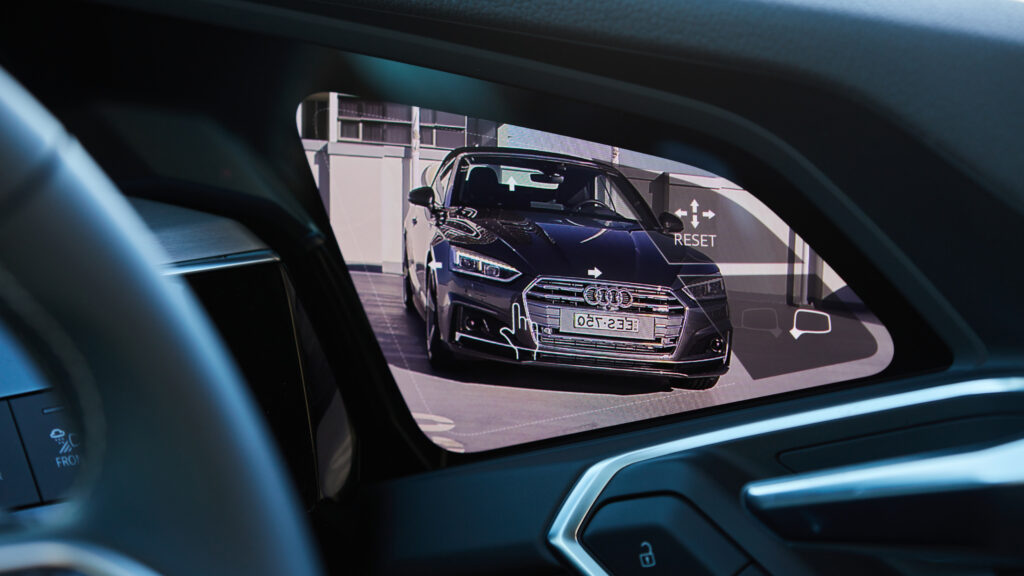
Enter Audi’s e-tron, and its very cool virtual exterior mirrors – the first time we’ve seen a passenger vehicle sporting this technology in Australia. Mounted on skinny stalks, Audi’s swapped the traditional mirrors for small cameras, digitally projecting the rear view on high resolution 7-inch OLED displays screens. These 1280×1080 pixel high-contrast screens are integrated at the top edge of each front door, just above the door handle and below the A-pillar.
A bit gimmicky? Not according to the aero team. The Audi e-tron has a Cd (drag) value of just 0.27, which is 5 per cent lower than when fitted with conventional mirrors. Therefore more range and less wind noise; welcome attributes for EV adopters.
The technology is standard on the range-topping e-tron 55 First Edition ($159,600) and e-tron Sportback 55 First Edition ($169,950), but there’s a hefty price to pay for these ultimate show-off mirrors in lesser grades.
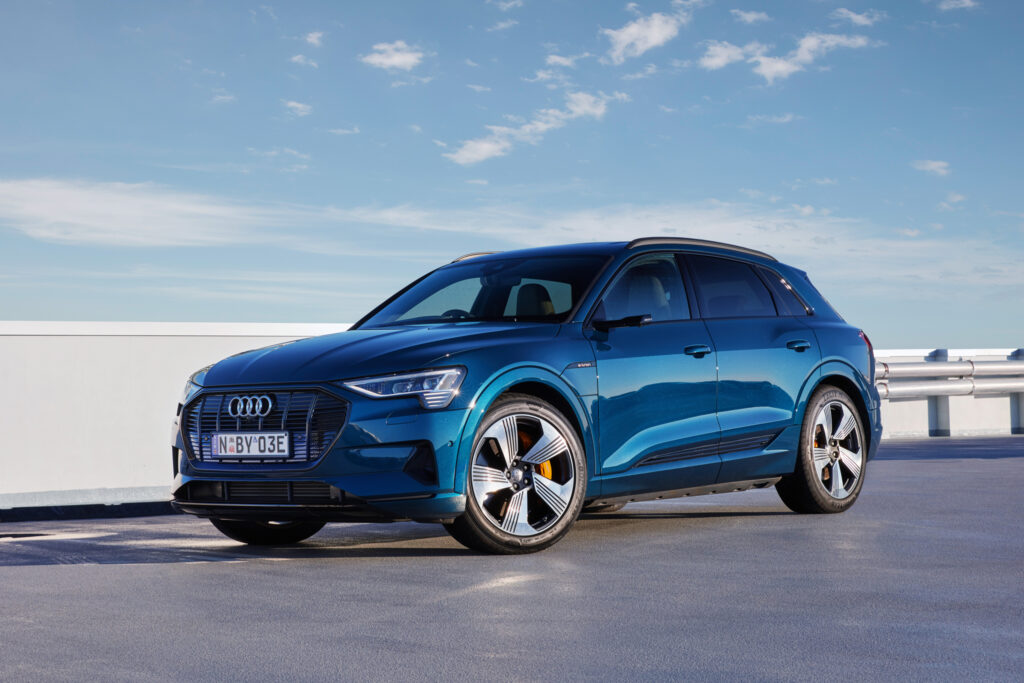
You need to option a Premium Plus package to snare them, costing $9700 for the normal e-tron and $6700 the e-tron Sportback. Each pack also includes 21-inch alloys, Matrix LED headlights, head-up display, Bang & Olufsen 3D sound system, 4-zone climate control and ambient lighting, so it’s sure to be a box ticked by the majority of e-tron shoppers.
Either way, these are mirrors you don’t want to knock off as you squeeze past a bus in city traffic. And let’s just hope drunken teens don’t snap one off as a souvenir on their stumble home from the pub. They don’t electrically fold away, but you can manually tuck them in to (hopefully) prevent them being knocked off.
So do virtual mirrors actually work as well as the glass we’ve been so accustomed to this last century? My brain adapted to using the rear-view screens very quickly – after all, we’re accustomed to not looking over our shoulders anymore when reversing: the dash screen and rear camera have solved that. The digital image was as crystal clear as a (clean) glass mirror, but less distorted, and seemed to practically eliminate blind spots.

The screens are mounted a tad lower than where your eye is typically drawn to check your side mirrors, but again, the adjustment doesn’t take long.
As expected, this digital tech allows for greater rear-view smarts. At night or in poor weather your vision is improved as the screen’s image automatically enhances the view – something glass can’t do.
You can adjust or zoom your rear view by swiping the screen, while blind spot and approaching vehicle warnings are given through colourful flashing lights around the image.
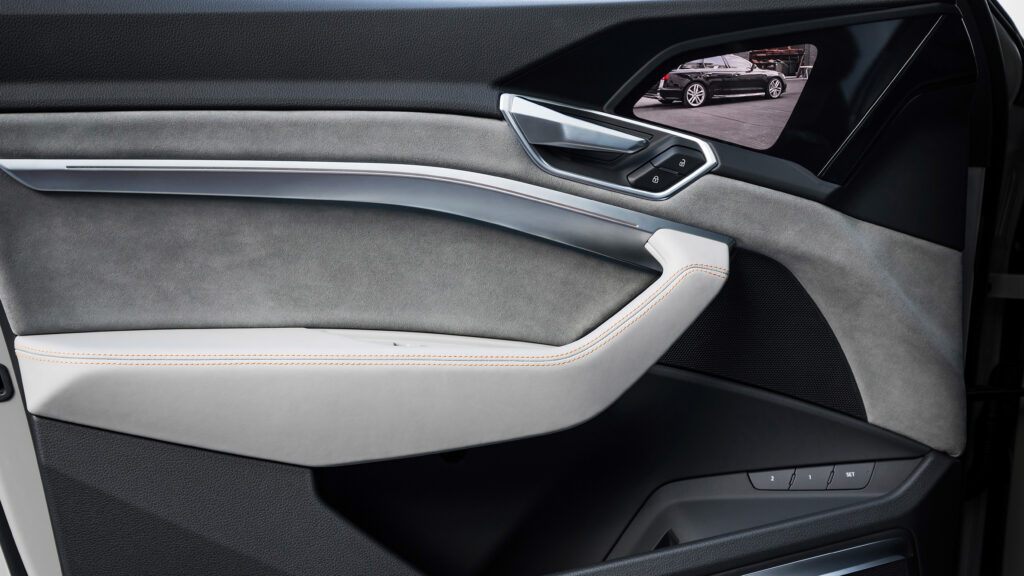
The system detects if you’re moving swiftly on a motorway and will zoom out so you have a more comprehensive view of what’s coming up behind. Then in town you may start slowing and indicating to turn, and the camera can pick up a cyclist coming up behind and flash wildly at you to reconsider. It also automatically points the camera down at the kerb when you reverse park. So far, so clever.
Negatives I can consider are what will happen if one (or both) get damaged or malfunction? No doubt the car would go into limp mode and insist on being taken to an Audi dealer on the back of a flatbed for repair. The bill, I’m sure, would be no laughing matter.
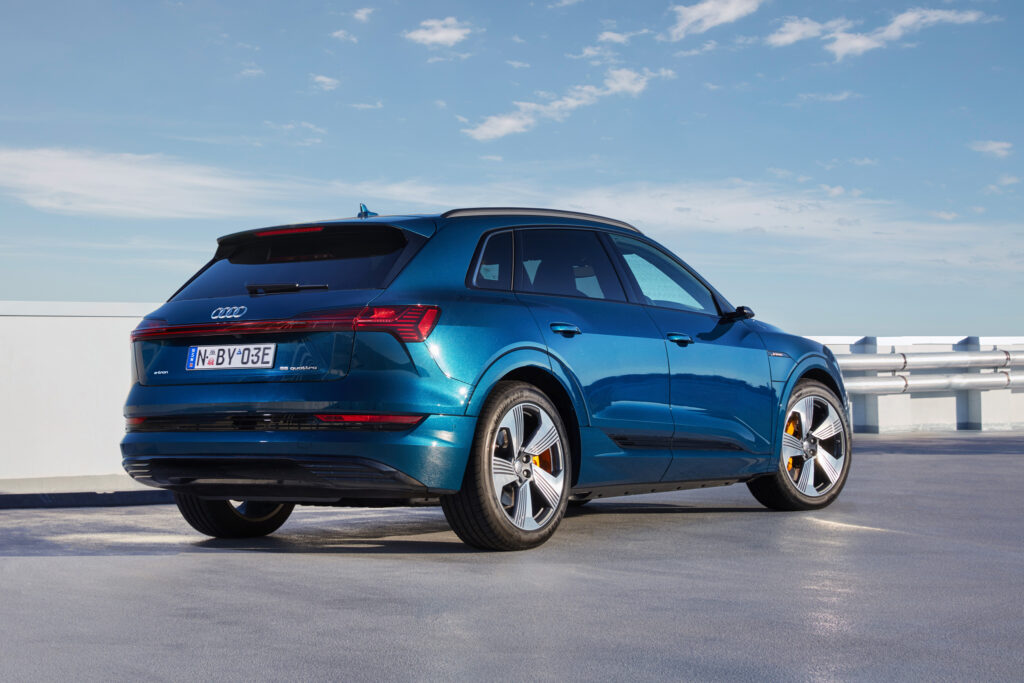
Exactly how user friendly they’ll prove over the course of four seasons in a year will be interesting to see. How they cope with things like snow, ice and fogging up – if they get muddy you’ll still need to wipe them clean – remains to be seen.
Lexus offers something similar in Japan and, recently, the EU, with its Digital Side-View Monitor option for its ES sedan. Interestingly, these feature built-in heaters for the camera and stalk to prevent freezing.
Could these virtual mirrors become more mainstream? In the rapidly evolving world of EVs, and the aerodynamic gain and technology cool factor they bring, it seems almost inevitable.




